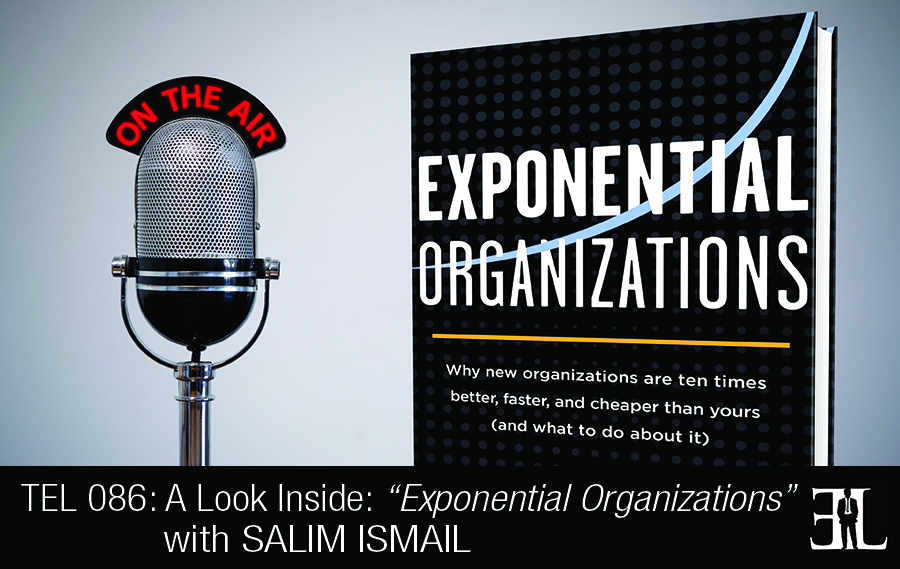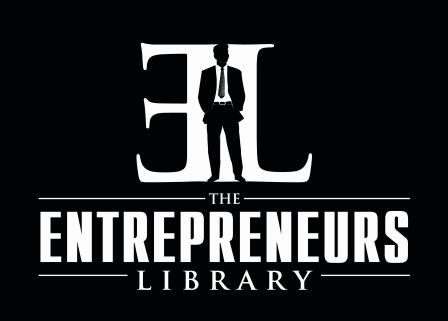A Preview of Exponential Organizations with Salim Ismail

A summary of things you should know about Exponential Organizations according to Salim Ismail
Introduction
In this episode Salim Ismail gives a deep dive of his book, Exponential Organizations where he shows you how any company, from a startup to a multi-national, can become exponential.
In his book, Ismail unveils years of research learning how organizations can accelerate growth through the use of technology. The goal of the book is to provide you with the knowledge to leverage assets such as big data, communities, algorithms, and new technology to achieve performance ten times better than your competition.
This book is perfect for entrepreneurs who need a guide for harnessing and strategizing the hyper growth of a company that feeds off of modern technology in the 21st century and beyond.
The Book’s Unique Quality
Because we focus on accelerating technologies and the future we identified an inflection point in how we build businesses that has never noticed before.
The Best Way To Engage
You can jump in as needed but I would suggest reading the first two chapters first because it lays the premise and basis of the book.
The Reader’s Takeaway
As we finish the book the core economic basis of these new exponential organizations kind of bubbled up. When you are building and running a business you are worried about money and cost of supply and worried about cost of demand. The internet allowed us to drop our cost of demand exponentially.
A Deep Dive Into The Book
We open chapter one basically by saying the world is moving exponentially quicker. As we digitize things we hop onto what we call Moore’s Law and the pace of change moves very, very quickly at an accelerating pace. Where we saw computers move at this pace over the last 50 to 60 years based on Moore’s Law we’re not seeing six, seven or eight technologies hop onto that same curb. The first chapter is to give a hard reality check that the world is moving more quickly than we’ve ever seen it before and we give some specifics on how that works.
The second chapter talks about our organizational structures and the fact that how we organize ourselves is very linear and has been for a long time. All of our businesses have inherited a local and linear characteristic where if you had twice as big of a farm you need twice as many people to farm it. We are seeing today that an information based environment actually accelerates and doesn’t just stay linear. We are seeing new organizations that are scaling at an accelerating rate and not just as a multiplier. In this chapter we teach you how to make your organization adapt to this new accelerated pace.
Chapter three looks at the five externalities of these organizations and I open this chapter by saying all these exponential organizations have one single visionary mission statement characteristic. Each has what I call an MTP (Massive transformative purpose). Chapter three continues to describe five externalities and map onto the acronym SCALE. S stands for Staff on Demand. C stands for Community and Crowd. The A stands for Algorithms. The L stands for leveraged Assets. And the E stands for Engagement.
Chapter four dives into the five internal control mechanisms that these organizations are using to manage and track themselves. This maps on to the word IDEAS. The I stands for Interface Processes. The D stands for Dashboards. The E stands for Experimentation. The A stands for Autonomy. And the S stands for Social Technologies. What we found is if you implement four out of the 10 attributes that we described in chapter three and four you will get to the 10x level.
Chapter five summarizes all of it and explains the implications of this new model. This chapter goes through a whole set of implications about how to think about the future.
The second half of the book, chapter six to chapter ten, explains how to apply it. Chapter six is about how to apply this to a startup. And when you are starting a company from scratch what sequence to go in. This chapter will give you the specific steps to take to launch a startup with these principles in mind.
Chapter seven is about how to apply this to a midmarket company. There are a lot of midmarket family style businesses that have grown early on but have now plateaued and this is about taking that and blowing it open.
Chapter eight is about how to organize a big company because you can’t take a big organization and turn it in to one of these new animals, it’s too disruptive of a change. What you need to do is take a disruptive set of changes agents that exist in all organizations and build one of these exponential organizations off the edge of your own attacking in another marketplace.
Chapter nine is a set of nine success stories of what big companies are doing.
In the final chapter we talk about the role of the executive in the future.
Notable Quotes From The Book
“Any organization built for success in the 20th century is doomed for failure in the 21st century.” – David Ross
The Credibility/Inspiration Of The Author
I am the founding executive director and currently global ambassador for Singularity University. Our mission statement at Singularity University is to create a new generation of leadership that can leverage accelerating technologies to solve major global problems. I have been doing this for about six years and was the head of innovation at Yahoo and Tech Entrepreneurship before that.
As we launched Singularity six years ago we noticed at the same time that a very different model has become of how we build organizations. We’ve learned how to scale technology really well but scaling the organization and building that is painfully incrementally and linear. In the last five years or so we are seeing a new breed of organizational structure that can scale in the same seamless way that we scale technology. I noticed that as a weak signal five years ago, started tracking it, and over the last three years we have found over 60 organizations that are scaling at an average 10 times better, faster and cheaper compared to their peers. We started documenting those 60 organizations and tracking them and decided to write a book on the model.
Other Books Recommended By The Author
The Innovator’s Dilemma by Clayton Christensen
The Zero Marginal Cost Society by Jeremy Rifkin
More Information About This Book and The Author
Buy Exponential Organizations by Salim Ismail on Amazon today
Visit ExponentialOrgs.com take the diagnostic survey and learn more about the book
Visit SingularityU.org to learn more about Singularity University
Follow Salim Ismail on Twitter and Facebook
More Information About This Episode
Download the full transcript here (coming soon)
Listen on iTunes, Stitcher , and SoundCloud
Related books: Zero to One: Notes on Startups, or How to Build the Future by Peter Thiel and Blake Masters | The Innovator’s Method: Bringing the Lean Start-up into Your Organization by Nathan Furr
What did you like and not like about this episode? Fill out this one minute survey here.
 The Entrepreneurs Library
The Entrepreneurs Library














